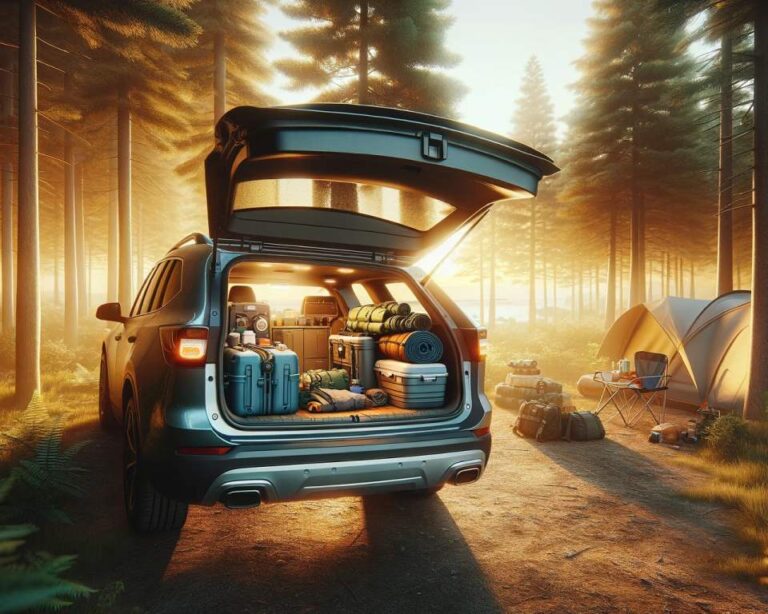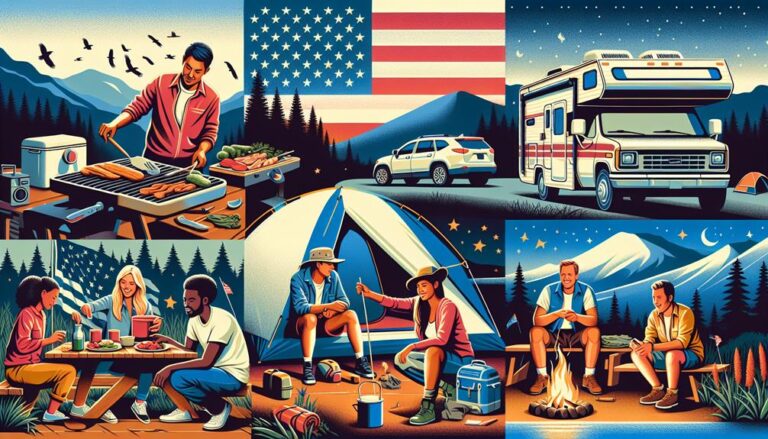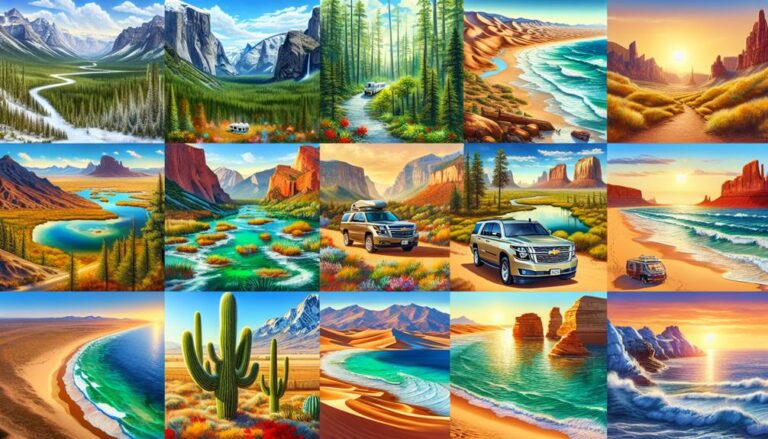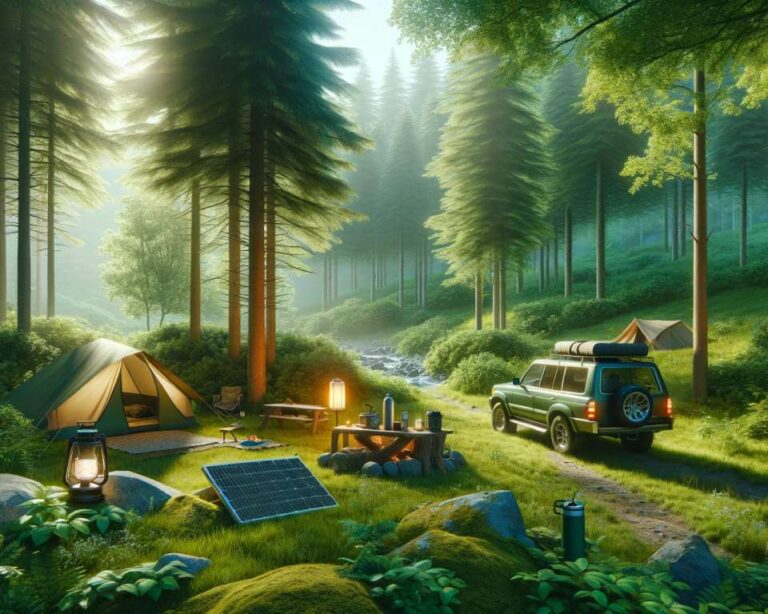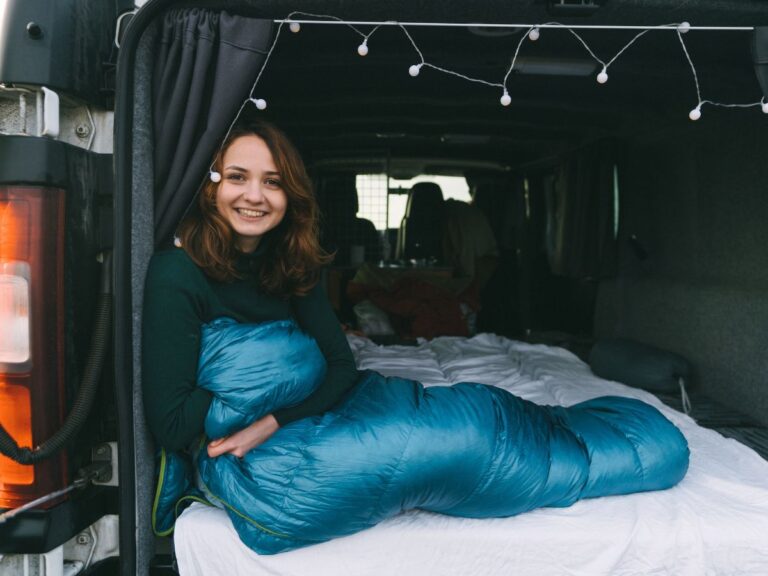Discovering Ideal Car Camping Locations: How to Find the Best Spots
Car camping is a great way to experience the outdoors and explore new destinations. Finding the ideal car camping location can make all the difference in creating a memorable outdoor getaway. In this article, we will guide you on how to find the best car camping spots in the United States, with a focus on public lands, private campgrounds, and dispersed camping areas. From national parks to secluded forest service sites, there is a perfect car camping spot for everyone’s preferences and needs.
Are you ready to embark on the ultimate car camping adventure? Let’s dive in and discover the top-rated car camping areas, ideal car camping places, and recommended car camping spots across the country. Whether you’re searching for the best car camping spots, top car camping destinations, or great car camping locations, we’ve got you covered. Let’s explore the perfect car camping sites together!
Car Camping on Public Lands: Forest Service & BLM Campgrounds
When it comes to finding ideal car camping locations, public lands managed by the US Forest Service and Bureau of Land Management (BLM) offer incredible opportunities. These campgrounds are often situated in scenic areas, close to national parks, and provide a wide range of amenities for campers.
Forest Service and BLM campgrounds are renowned for their spacious and affordable campsites. Each site typically features basic amenities such as vault toilets, fire rings, and access to potable water. Whether you’re planning a weekend getaway or embarking on a spontaneous road trip, these campgrounds offer flexible options. Some operate on a first-come, first-served basis, allowing adventurers to secure a campsite without prior reservations.
In certain instances, you may need to make reservations for specific Forest Service or BLM campgrounds, especially if they are located in popular national parks. It is recommended to check their respective websites to ensure availability and secure your spot in advance.
“Forest Service and BLM campgrounds provide spacious and affordable campsites, making them an ideal choice for car camping.”
Exploring public lands like these allows you to immerse yourself in the natural beauty of the United States while enjoying the comforts of car camping. The next sections will explore other options for finding the perfect camping spots, including dispersed camping, using maps to scout locations, asking locals for recommendations, and more.
Dispersed Camping: Finding Secluded Camping Experiences
For those seeking a more secluded camping experience, dispersed camping on public lands is a fantastic option. Dispersed camping allows you to camp outside of established campground areas, providing an opportunity to enjoy spectacular views and solitude.
Dispersed camping is available on both US Forest Service land and BLM land. On US Forest Service land, motor vehicle use maps (MVUM) are a helpful tool for finding dispersed camping areas. These maps outline the forest service roads and designated camping areas, helping you navigate and locate suitable camping spots. You can access MVUMs online or obtain them from the US Forest Service website.
On BLM land, camping is generally allowed in most areas that are not closed to camping. This means you have the freedom to explore and find dispersed camping locations that suit your preferences. However, it’s important to respect these public lands by using pre-existing campsites and following any rules and guidelines provided by the land management organizations.
“Dispersed camping allows us to reconnect with nature, away from the crowds and developed campgrounds. It’s a chance to immerse ourselves in the beauty of the great outdoors and experience true solitude.” – avid camper
Benefits of Dispersed Camping:
- Seclusion: Dispersed camping offers a sense of privacy and seclusion that can be hard to find in established campgrounds. You can escape the crowds and enjoy a peaceful camping experience.
- Flexibility: With dispersed camping, you have the freedom to choose your own campsite and set up camp in a location that complements your preferences.
- Spectacular Views: By camping outside of established areas, you can often find camping spots with breathtaking views of nature, such as mountains, lakes, or forests.
- Immersive Nature Experience: Dispersed camping allows you to fully immerse yourself in nature, with the opportunity to spot wildlife, hike trails, and experience the serenity of the natural environment.
When participating in dispersed camping, it’s important to practice Leave No Trace principles. This means leaving your campsite as you found it, minimizing your impact on the environment, and respecting the flora and fauna around you. By following these guidelines, we can ensure that future campers can also enjoy the beauty of dispersed camping.
So next time you’re planning a camping trip and seeking a secluded experience, consider dispersed camping on US Forest Service land or BLM land. Explore the vastness of public lands and create unforgettable memories in nature’s hidden gems.
Using Maps to Find the Best Camping Spots
Maps are an invaluable tool for finding the best car camping spots. They provide a visual representation of the area, allowing you to scout potential camping areas and make informed decisions. Whether you’re planning a trip to a national park or exploring the wilderness on public lands, maps can help you navigate and discover the perfect camping spot.
One of the most useful maps for car camping is the Forest Service Motor Vehicle Use Map. These maps provide detailed information on forest service roads, dispersed camping areas, campgrounds, and more. They can be accessed online or obtained from the official website of the US Forest Service. Forest Service Motor Vehicle Use Maps empower you to explore remote and secluded areas, ensuring a unique and off-the-beaten-path camping experience.
“Forest Service Motor Vehicle Use Maps are an essential resource for car campers. They provide valuable information on road accessibility, camping areas, and recreational opportunities in national forests. These maps allow us to find hidden camping gems and plan our outdoor adventures with confidence.”
In addition to Forest Service Motor Vehicle Use Maps, technology has revolutionized the way we use maps for camping. Google Maps satellite view and Google Earth provide high-resolution imagery, allowing you to examine the surroundings, topography, and existing campsites before making your choice. These tools give you a better understanding of the terrain and help you assess if a camping spot meets your preferences and needs.
Moreover, there are various camping apps available that can assist you in finding the perfect camping spot. Recreation.gov, Ultimate CG, and AllStays Camp & RV are popular apps that provide comprehensive information on campgrounds, amenities, reservations, and more. These apps are a convenient way to access up-to-date data and streamline your camping planning process.
The Benefits of Using Maps for Camping:
- Visual representation of the area
- Ability to scout potential camping areas
- Access to detailed information on forest service roads and dispersed camping areas
- High-resolution imagery through Google Maps satellite view and Google Earth
- Campground information and reservations through camping apps
By utilizing maps, both traditional and digital, you can make the most of your car camping experience. These tools empower you to explore new destinations, find secluded spots, and plan memorable outdoor adventures. So, grab your maps, start exploring, and enjoy the beauty of nature from your perfect camping spot!
Asking Locals for the Best Camping Spots
Sometimes the best way to find the perfect car camping spot is by asking locals for their recommendations. They have insider knowledge about the area and can provide valuable insights on hidden gems and lesser-known camping spots. Engaging with the local community allows us to discover unique camping experiences that are off the beaten path and not widely known.

Local outdoor sports stores, coffee shops, ranger stations, and visitor centers are great places to start when seeking recommendations. They often have staff who are outdoor enthusiasts themselves and can offer valuable camping tips and advice based on their knowledge of the area.
“The locals really know their stuff when it comes to camping in the area. They can point you to the most scenic spots, the best fishing spots, and even the must-visit hiking trails. Don’t be shy to strike up a conversation and ask for their favorite camping recommendations!”
– Sarah Thompson, Avid Camper
By tapping into the wisdom of the locals, we can find camping spots that may not be listed in guidebooks or online resources. These hidden gems often offer unique landscapes, breathtaking views, and a sense of solitude that can make our camping experience truly special.
Benefits of Asking Locals for Recommendations:
- Discover hidden gems and lesser-known camping spots
- Receive insider tips and advice from locals who are familiar with the area
- Find camping spots with unique landscapes and breathtaking views
- Learn about local activities, attractions, and hiking trails
- Support the local community and engage with like-minded outdoor enthusiasts
So, next time you’re planning a car camping trip, consider asking the locals for their recommendations. You never know what hidden treasures you might uncover!
Camping with a Roof Top Tent: Public and Private Camp Spots
Camping with a roof top tent adds an extra level of convenience and comfort to car camping. Whether you prefer the tranquility of public designated camp spots or the amenities provided by private campgrounds, there are suitable options for roof top tent campers.
Public Designated Camp Spots
Public designated camp spots, such as those in national parks, state parks, and national forests, offer ideal opportunities for roof top tent camping. These campgrounds often have designated tent sites that accommodate roof top tents. In addition, some campgrounds provide RV/camper sites that can comfortably host roof top tents. With stunning natural surroundings and various outdoor activities, public designated camp spots are perfect for adventurous car campers.
Private Camp Spots
If you prefer a more personalized camping experience, private campgrounds are a great option. Mom-and-pop campgrounds and KOAs cater to roof top tent campers, offering a range of amenities such as showers, restrooms, and campfire pits. These campgrounds can be reserved online or through their respective websites, ensuring a hassle-free camping adventure. Whether you’re seeking a family-friendly atmosphere or a secluded retreat, private camp spots provide a comfortable and accommodating environment for roof top tent campers.
Making Reservations for Public Designated Camp Spots
Making reservations for public designated camp spots is crucial, especially during peak camping seasons. Many national parks, state parks, and national forest campgrounds offer online reservations, allowing you to secure your preferred campsite in advance.
It is recommended to make reservations as early as possible, as popular campgrounds can fill up quickly. Some campgrounds also operate on a first-come, first-served basis, requiring you to arrive early to secure a spot.
Checking the websites of the respective land management organizations, such as the National Park Service, is the best way to find information and make reservations.

Reserving Camp Spots: A Hassle-Free Experience
Reserving camp spots in public designated areas has never been easier. With online reservations readily available, campers can secure their preferred campsite with just a few clicks. Whether you are planning a family vacation or a weekend getaway, making reservations in advance ensures a stress-free and enjoyable camping experience.
Reserving camp spots online provides a convenient way to plan your trip, especially for those who prefer structured itineraries. By reserving in advance, you have the peace of mind knowing that a campsite is waiting for you upon arrival.
Popular destinations, such as national parks and state parks, often have high demand for campgrounds. Making online reservations allows you to avoid disappointment and guarantees your spot in these sought-after locations.
First-Come, First-Served: The Thrill of Spontaneous Camping
While online reservations are widely available, some campgrounds still operate on a first-come, first-served basis. This means that campers have the opportunity to secure a campsite by arriving early and grabbing an available spot.
For those looking for a bit of adventure and spontaneity, first-come, first-served campgrounds can be an exciting option. However, it is important to note that these campgrounds can fill up quickly, especially during peak seasons. Arriving early in the day is the best way to increase your chances of snagging a spot.
Reserving with the National Park Service and State Parks
The National Park Service and state parks often have a wide range of public designated camp spots available. These campgrounds offer stunning natural landscapes and a variety of amenities to enhance your camping experience.
When planning a camping trip to a national park or state park, it is essential to check their respective websites for information on reservations. These websites provide detailed campground information, availability, and any specific reservation requirements.
Booking your campsite directly through the National Park Service or state park websites ensures accuracy and reliability. It allows you to view real-time availability and choose the camp spot that best suits your needs.
Whether you prefer the convenience of online reservations or the spontaneity of first-come, first-served campgrounds, reserving public designated camp spots is the key to a successful car camping adventure. Plan ahead, secure your spot, and get ready to enjoy the great outdoors.
Reserving Private Camp Spots
When it comes to car camping with a roof top tent, private campgrounds are a fantastic option that cater to both tent and RV/camper campers. These campgrounds offer a range of amenities to enhance your camping experience, and the best part is that you can easily reserve your spot online through their respective websites.
If you’re looking for a comprehensive list of private campgrounds, websites like Campendium and Allstays are invaluable resources. These platforms provide detailed listings of private campgrounds across the country, allowing you to search for camp spots in your desired area. With just a few clicks, you can explore reviews, photos, and other essential information to make an informed decision.
Research before You Reserve
Before making a reservation at a private campground, it’s essential to do your research. Reading reviews from fellow campers can give you valuable insights into the facilities, amenities, and overall experience offered by the campground. Pay attention to factors such as cleanliness, customer service, and proximity to attractions or outdoor activities that interest you. By gathering as much information as possible, you can ensure that the campground meets your expectations and preferences.
It’s also important to note that reservation policies and availability can vary from one private campground to another. Some campgrounds may have a minimum stay requirement, specific check-in/check-out times, or restrictions on the number of guests or vehicles per site. To get accurate and up-to-date information, it’s always best to check the individual campground websites or contact their customer service directly.
Whether you’re in search of a peaceful retreat in nature or a family-friendly campground with a range of activities, private campgrounds offer diverse options to cater to different needs and preferences. By reserving your private camp spot in advance, you can secure your favorite campsite and embark on a memorable car camping adventure.
Dispersed Camping on Public Lands: Finding Secluded Spots
Dispersed camping on public lands, such as National Forests and BLM lands, offers car campers the opportunity to experience the serenity of secluded and private camping spots. Unlike established campgrounds, dispersed camping allows you to park your car and set up camp in designated areas, away from the crowds. The keyword here is seclusion.
When engaging in dispersed camping, it’s crucial to adhere to the rules and guidelines set by the land management organizations like the National Forest Service and the Bureau of Land Management (BLM). This ensures the protection and preservation of these natural areas for future generations. By following these guidelines, you can maintain the privacy that dispersed camping provides.

With dispersed camping, you can immerse yourself in nature and enjoy the tranquility of wide-open spaces. Picture yourself setting up camp in the heart of a lush National Forest, surrounded by towering trees and the sounds of wildlife. Or finding solace in the remote beauty of vast BLM lands, where breathtaking vistas stretch as far as the eye can see.
By exploring and discovering dispersed camping opportunities in National Forests and BLM lands, you can escape the crowds and enjoy the seclusion that comes with being surrounded by nature. Imagine waking up to the gentle rustle of leaves or stargazing undisturbed by artificial lights. Dispersed camping truly allows you to experience the beauty and solitude of the great outdoors.
“Dispersed camping provides a unique opportunity to connect with nature in its rawest form. The seclusion and privacy offered by these public lands are a true escape from the hustle and bustle of everyday life.” – Outdoor Enthusiast
So, pack your camping gear and head out to the vast wilderness of National Forests and BLM lands for an unforgettable dispersed camping adventure. Experience the tranquility, privacy, and natural beauty that these secluded spots have to offer. Get ready to create lasting memories amidst the serenity of the great outdoors.
Urban Boondocking: Camping in Non-traditional Spots
For those looking for a unique camping experience, urban boondocking offers the opportunity to camp in non-traditional spots such as Walmart parking lots, rest areas, and other parking areas. While not as scenic as wilderness camping, urban boondocking can be convenient and budget-friendly. Many Walmart locations allow overnight parking for RVs and campers, providing a safe and accessible option for car campers. Rest areas and certain parking areas may also permit overnight stays, although it is important to check for any specific regulations or restrictions before setting up camp.
Convenience and Affordability
Urban boondocking appeals to campers looking for convenient camping options in urban or suburban areas. It allows them to find temporary camping spots close to their desired destinations or along their travel routes. Parking lots, such as those at Walmart, provide a level of security and convenience, often located near essential amenities like grocery stores and restaurants.
“Urban boondocking gives us the flexibility to explore cities and towns without the need for traditional campgrounds. We can stop for the night, sleep in our camper, and wake up ready to discover new urban adventures.” – John, avid car camper
Regulations and Considerations
While urban boondocking offers an alternative camping experience, it’s important to be aware of the specific regulations and considerations that come with camping in non-traditional spots:
- Check local regulations: Before setting up camp in a parking lot or rest area, research local regulations to ensure overnight camping is permitted. Some areas may have restrictions on camping or specific conditions for parking overnight.
- Be discrete and respectful: When urban boondocking, it’s essential to be discreet and respectful of the surrounding environment. Avoid excessive noise, dispose of trash properly, and follow any posted rules or guidelines.
- Maximize safety: Choose well-lit parking areas and prioritize safety when selecting an urban boondocking spot. Keep your belongings secure and be aware of your surroundings.
Alternative Camping Experiences
While urban boondocking may not offer the same scenic beauty as traditional camping spots, it provides unique opportunities to explore cities and towns while still enjoying the convenience of camping near essential amenities. It can also be a cost-effective option for travelers looking to cut down on accommodation expenses.
Whether you’re passing through a city or want to experience urban camping, urban boondocking opens up new possibilities for car campers, providing a different perspective on the camping experience.
Tips for Finding the Perfect Car Camping Spot
Finding the perfect car camping spot requires a combination of research, exploration, and a sense of adventure. Here are some tips to help you in your search:
- Use maps, both online and offline, to scout potential camping spots and get a better understanding of the area.
- Utilize apps and websites that provide information on campgrounds, amenities, and availability.
- Ask locals for recommendations and insider tips on hidden gems and lesser-known camping spots.
- Make reservations in advance for public designated camp spots to secure your preferred campsite.
- Be flexible and open to exploring different types of camping areas, such as public lands, private campgrounds, dispersed camping, and urban boondocking.
- Respect the rules and guidelines set by land management organizations to ensure the preservation of natural areas and a positive camping experience for all.

By following these tips, you’ll be well on your way to finding the perfect car camping spot for your next outdoor adventure.
Conclusion
Discovering the ideal car camping location is an exciting endeavor that can lead to unforgettable outdoor experiences. Whether you prefer the vastness of public lands, the convenience of private campgrounds, the seclusion of dispersed camping, or the adventure of urban boondocking, the United States offers a wide range of options to cater to every camper’s preferences.
To find the best car camping spots, it is essential to conduct thorough research and preparations. Utilize maps, both online and offline, to scout potential camping areas and gain a better understanding of the surrounding environment. Take advantage of various apps and websites that provide comprehensive information on campgrounds, amenities, and availability.
Additionally, seeking recommendations from locals can be a game-changer in discovering hidden gems and lesser-known camping spots. Engaging with the local community, whether it’s visiting outdoor sports stores, coffee shops, ranger stations, or visitor centers, can provide valuable insights and tips that will enhance your camping experience.
Remember to respect the rules and guidelines set by land management organizations and to make reservations in advance for public designated camp spots during peak seasons. With the right research, preparation, and a sense of adventure, you can find the ideal car camping location that perfectly fits your needs and preferences, creating lifelong memories in some of the best car camping destinations the United States has to offer. Happy camping!
FAQ
How can I find the best car camping spots in the United States?
There are several ways to find the ideal car camping locations. You can explore public lands such as Forest Service and BLM campgrounds, consider dispersed camping on public lands, use maps and camping apps to search for camp spots, ask locals for recommendations, or reserve public and private designated camp spots in advance.
What amenities do Forest Service and BLM campgrounds usually offer?
Forest Service and BLM campgrounds typically provide basic amenities such as vault toilets, fire rings, and potable water. Some campgrounds may also have picnic tables, showers, and dump stations. It’s best to check the specific campground’s amenities before your trip.
What is dispersed camping and how can I find dispersed camping areas?
Dispersed camping allows you to camp outside of established campground areas on public lands. To find dispersed camping areas, you can use Motor Vehicle Use Maps for US Forest Service land or check the rules and guidelines from BLM for available areas. It’s important to respect the rules and guidelines set by the land management organizations when dispersed camping.
What tools can I use to find the best car camping spots?
You can use Forest Service Motor Vehicle Use Maps, Google Maps satellite view, Google Earth, and camping apps like Recreation.gov, Ultimate CG, and AllStays Camp & RV to scout potential camping spots and find detailed information on campgrounds, amenities, and availability.
How can I get recommendations for car camping spots from locals?
You can ask locals for their recommendations by visiting outdoor sports stores, coffee shops, ranger stations, and visitor centers in the area. The local community can provide valuable insights on hidden gems and lesser-known camping spots, as well as tips and advice based on their knowledge of the area.
Can I camp with a roof top tent at public and private camp spots?
Yes, you can camp with a roof top tent at public designated camp spots such as national parks, state parks, and national forests. Many of these campgrounds have designated tent sites or RV/camper sites suitable for roof top tents. Private campgrounds also cater to roof top tent campers, and their websites typically provide information on site suitability and availability.
Should I make reservations for public designated camp spots?
Yes, it is crucial to make reservations for public designated camp spots, especially during peak camping seasons. Many national parks, state parks, and national forest campgrounds offer online reservations. Popular campgrounds can fill up quickly, so it’s recommended to make reservations as early as possible. Some campgrounds also operate on a first-come, first-served basis, requiring you to arrive early to secure a spot.
How can I make reservations for private camp spots?
You can make reservations for private campgrounds online through their respective websites. Websites like Campendium and Allstays provide comprehensive listings of private campgrounds, allowing you to search for available camp spots in your desired area.
What is urban boondocking and where can I do it?
Urban boondocking refers to camping in non-traditional spots like Walmart parking lots, rest areas, and certain parking areas. Many Walmart locations allow overnight parking for RVs and campers, providing a safe and accessible option for car campers. Rest areas and specific parking areas may also permit overnight stays, although it’s important to check for any regulations or restrictions before setting up camp.
What tips can you offer for finding the perfect car camping spot?
Some tips for finding the perfect car camping spot include using maps to scout potential camping spots, utilizing camping apps and websites for information and availability, asking locals for recommendations, making reservations in advance for public designated camp spots, being flexible and open to exploring different types of camping areas, and respecting the rules and guidelines set by land management organizations.



